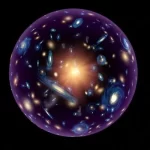Key Takeaways:
-
DFD could significantly reduce travel times, reaching Saturn in just 2-3 years compared to the current billion-mile journey taking much longer.
-
DFD utilizes aneutronic fusion, offering a high power-to-weight ratio and efficient fuel options.
-
Similar to hybrid cars, DFD can operate in two modes: constant thrust or initial thrust for acceleration, depending on mission needs.
-
The DFD reactor is surprisingly small, making it suitable for various spacecraft sizes.
-
DFD not only propels the spacecraft but also provides internal power for research, life support, and other systems.
According to experts, a suitable propulsion system could send spacecraft to Saturn in only two years. The Princeton Plasma Physics Laboratory is developing a concept called the direct fusion drive (DFD), which would make short work of the nearly billion miles that separate Earth and Saturn.
According to researchers there, the Princeton field reversed configuration-2 (PFRC-2) drive may hold the key to practical interstellar travel.
Titan, the moon of Saturn, was selected by the research team as the perfect moonshot. The #1 moon in our solar system has a great deal of scientific interest because of its surface liquids, and the fact that they’re hydrocarbons means Titan could even become a refueling waystation in some far future space highway system.
Universe Today reports:
“[T]he engine itself exploits many of the advantages of aneutronic fusion, most notably an extremely high power-to-weight ratio,” a press release reads. “The fuel for a DFD drive can vary slightly in mass and contains deuterium and a helium-3 isotope. Essentially, the DFD takes the excellent specific impulse of electric propulsion systems and combines it with the excellent thrust of chemical rockets, for a combination that melds the best of both flight systems.”
In a way, this is a lot like how hybrid consumer vehicles are designed. There are times when electric provides the best, most efficient push, and there are times when fossil fuels are still the most logical choice. The PPPL direct fusion drive is being studied in two modes: one where it thrusts the entire time, and another where, like a Prius, it thrusts to get up to speed at the beginning only. It takes between two and three years, depending on the mode, to reach Titan.
Since even larger spacecrafts in our current imagination are much smaller than homes or businesses on Earth, the reactor itself is relatively small. “DFD employs a unique plasma heating system to produce nuclear fusion engines in the range of 1 to 10 MW, ideal for human solar-system exploration, robotic solar-system missions, and interstellar missions,” PPPL researchers wrote.
Like most rocket engines, the interior’s plasma is heated to performance temperatures by radio waves. Its design is open at one end to produce thrust as energy shoots out very quickly.
For now, this design, as Universe Today jokes about all of nuclear fusion, is about 30 years away. This is due to the fact that 2046 represents the next window of opportunity for travel to Saturn’s satellites, providing PPPL scientists with a precise deadline and objective to aim for. Another significant benefit of their DFD design is that it can power the ship’s internal systems.
This implies that the ship’s research, life support, and propulsion will all run on the same energy-efficient drive.
Decades will still pass before anyone visits one of Saturn’s moons. But when they do, it will be a Titanic achievement.


